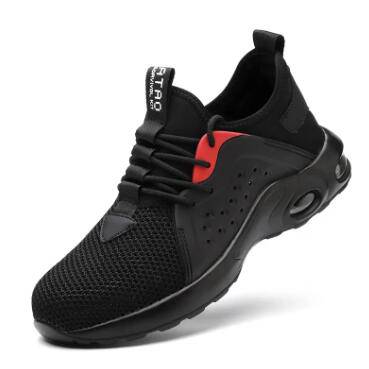What role do sports shoes play in injury prevention during physical activities
2023-10-27
Sports shoes play a crucial role in injury prevention during physical activities by providing support, stability, cushioning, and protection for the feet and lower extremities. Here are some key ways in which sports shoes help prevent injuries:
1. Shock Absorption: Sports shoes are designed with cushioning technologies in the midsole, such as air cushions, gel, or foam, to absorb and dissipate the shock generated during activities like running, jumping, and landing. This reduces the stress on the joints and muscles, lowering the risk of impact-related injuries.
2. Arch Support: Many sports shoes incorporate arch support features to maintain the natural arch of the foot. Proper arch support helps distribute weight evenly, reducing the risk of conditions like plantar fasciitis and overpronation-related injuries.
3. Pronation Control: Sports shoes often have features to control overpronation (excessive inward rolling of the foot) or supination (excessive outward rolling). This helps maintain proper alignment and reduces the risk of injuries like shin splints, stress fractures, and IT band syndrome.
4. Ankle Stability: Certain sports shoes, especially high-top basketball shoes and some hiking boots, provide ankle stability and support. This reduces the likelihood of ankle sprains and other ankle-related injuries.
5. Traction: The outsoles of sports shoes are designed with specific tread patterns to provide optimal traction on different surfaces. Proper traction helps prevent slips and falls, reducing the risk of ankle, knee, and hip injuries.
6. Toe Protection: Some sports shoes have reinforced toe caps to protect the toes from impact-related injuries. This feature is particularly important in outdoor and rugged environments, such as hiking and climbing.
7. Moisture Management: Sports shoes with moisture-wicking materials and ventilation features keep the feet dry. Dry feet are less prone to blisters, athlete's foot, and other moisture-related issues.
8. Proper Fit: Sports shoes are designed to offer a snug and secure fit, which minimizes foot movement within the shoe. A proper fit helps prevent blisters, calluses, and other friction-related injuries.
9. Customization: Some sports shoes allow for custom orthotic insoles, which can be prescribed by a podiatrist or sports medicine specialist. Custom orthotics provide personalized support and alignment, reducing the risk of injuries associated with abnormal foot mechanics.
10. Energy Return: Sports shoes with energy-returning technologies, such as responsive foams or spring systems, can improve energy efficiency during activities, reducing fatigue and the risk of overuse injuries.
It's important to note that the effectiveness of sports shoes in injury prevention also depends on the proper selection of shoes that match an individual's foot type, activity, and biomechanical characteristics. Additionally, regularly replacing worn-out sports shoes is crucial, as older shoes may lose their cushioning and support, increasing the risk of injuries.



